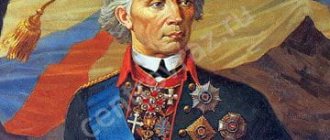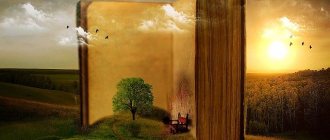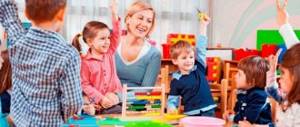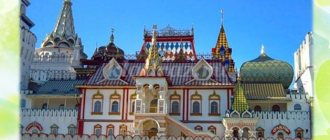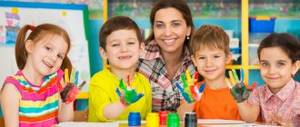Book structure, library lesson for 3rd grade
Library lesson
Class: 3
Topic: Book structure
Goal: deepening and expanding the knowledge about the book acquired earlier.
Tasks:
- Deepen knowledge about the structure of the book: title page, table of contents, preface, afterword.
- Develop book skills, choose the right book.
- Instill a love for books.
Forms and methods:
- Slide presentation
- Group work.
- Exhibition of books.
The book is a teacher
The book is a mentor,
A book is an invaluable comrade and friend.
The mind, like a stream, dries up and grows old,
If you let go of the book.
DURING THE CLASSES:
Slide 1.
Hello guys! Today we met at a library lesson, and our conversation will be about a book. You know that in any library there is a huge variety of different books, and when you come to me or another library, sometimes it is very difficult for you to make the right choice. Is that so?
Our lesson called “Book Structure” will help you with this, where you will get acquainted with the basic elements that will help you choose the right book for your taste.
Slide 2.
Here is an ordinary book in front of you. Do you know what all its parts are called, what type of font is used to type the text in the book, why illustrations are needed?
Any acquaintance with a book begins with its clothes. Why?
*binding
or
covers
.
Why do you think a cover is needed? (Children's answers.)
Books are covered with covers so that they serve people longer. The binding protects the book from damage and decorates it, and the cover also creates the first impression of the book. Is that just what the cover is for? What information can you learn by looking at it carefully? (Children's answers: author of the books, title).
Slide 3.
Nowadays we are accustomed to cardboard binding, but there were times when the binding consisted of boards and was covered with leather or beautiful fabric. Books in hard paper bindings first appeared in Russia in the mid-18th century.
Everything is clear with the cover, but who knows what a dust jacket
?
(Children's answers.)
Slide 4.
You often use the word “super,” but did you know that it means “above, above.” This means that this is an additional cover placed on top of the binding.
*It is intended to protect the book from dirt and damage, and also serves as its decoration, being an element of book design and advertising of the book. Most often, dust jackets are found on very expensive or gift editions, encyclopedias.
Slide 5.
In the same publications you can often find a bookmark in the form of a ribbon, which is called
a lasse
.
* The main function of the lasse is as a bookmark - to mark the desired page, and it also decorates the book.
Slide 6.
Every book has
a spine -
the grandfather of pages. He is always in sight. If a book is on a shelf, then anyone can see it. By looking at the spine, everyone knows the name of the book and who wrote it.
Slide 7.
Let's open the book.
The first thing we pay attention to is, of course, the first sheet, glued on one side to the binding cover, connecting the binding to the book block. This is a flyleaf
.
*The word consists of two German words: “for” (before) and “zatz” (set), i.e. what precedes the text. What role do you think the endpaper plays? (Children's answers.)
It plays not only a service role, connecting the cover with the book block, but often it is one of the elements of the book’s artistic design.
Slide 8.
Turning over the free endpaper, we see
the title page
.
*He is called the face of the book, its door. Do you know what usually goes on the title page? (Children's answers.)
*The title of the book, the name of the author, information about the publishing house that published the book, the time and place of its publication are placed here. The name of the artist who illustrated the book is often indicated. If the book is translated from another language, then you can also see the translator’s name on the title page.
Slide 9.
Pay attention to the next word "
shmuttitul
". What is it? The second part of the word is familiar to us, and the first means “dirty.” “Dirty title”, but why is it “dirty”? The thing is that previously the title page was called the page before the title page.
* Its purpose was to protect the title page from contamination. Nowadays, the title refers to the pages on which the names of individual parts or chapters of the book are placed.
Slide 10.
Often
a frontispiece
.
*This is the title illustration, which is an illustration for the entire work and expresses the main idea of the work.
Slide 11. *
Sometimes a portrait of a writer or main character is placed here.
Slide 12.
*
Turn the page and see that almost every book has an annotation - this is a short story about the book, written in small print.
Sometimes it’s just two or three phrases, but about the main theme of the work. The abstract is placed on the back of the title page or at the end of the book, that is, on the first or last pages. (Shows with an example).
Remember, before you borrow a book from the library, read the abstract. This will help you make the right choice.
Slide 13.
And now we move on to the next elements of the book -
the preface
and
afterword.
These two elements are inextricably linked with each other. These are articles about a book or author that are placed before the text (preface) or after it (afterword). The preface and afterword will tell you about the author, his life and work, about the book, about the history of its creation, about the characters of the book, their future fate and much more.
Mystery:
What is the name given to listing all the works or chapters included in a book, indicating the pages where they are located.
(Contents or table of contents).
Slide 14.
Any publication has
a table of contents
or
table of contents
. This is especially true for collections (fairy tales, poems, stories). The table of contents helps us get acquainted with the main content of the book, find out the exact “address” (page) where one or another work can be found. The table of contents is usually placed at the end of the book, less often at the beginning.
Sometimes at the end of the book the author places a short dictionary in which he explains words and terms that children do not understand. For example, you are reading a book about the sea, travel. And sailors on ships have their own language, so you simply cannot do without a dictionary of maritime terms. (Shows with an example).
What is the first thing that interests many of you when leafing through a book? Does it have pictures, illustrations? Slide 15.
Let's find out where this word came from in the Russian language and what it literally means. Let's use the Dictionary of Foreign Words.
Slide 16.
The word “illustration” is *Latin, translated as visual image.
Why are illustrations needed in books? (Children's answers.)
*The purpose of the illustration is to help better understand what is said in the text, illuminate its content, make it clear and visual. *Illustrations help even before reading
* navigate the contents of the book, attract readers.
Now we will look at different types of illustrations.
Slide 17–18.
–
a splash illustration
is placed at the beginning of a part or chapter of a book. This is a small composition that highlights or decorates the beginning of a section. It prepares the reader to perceive a work or chapter of a book.
Slide 19–20.
–
strip illustration
– full-page drawing;
Slide 21
– half-strip illustration
– located on half the page;
Slide 22–23.
– double-page illustration
– located on two pages. The double-page illustrations depict important events in the work;
Slide 24–25.
– defense
– book illustration in the form of a small drawing surrounded by text;
Slide 26–27 –
marginal drawings –
book illustrations usually depict less significant events of a work or chapter;
Slide 28–29
- ending illustration
- is placed at the end of chapters, parts or the entire book (these are various plots, ornaments, symbols).
Slide 30.
–
insert illustration –
illustration placed on a separate insert sheet. The paper quality of this sheet may differ from the paper of the entire book block.
Which famous illustrators do you know? (Children's answers.)
Slide 31–32.
Leading children's book illustrators in Russia are I. Bilibin, V. Lebedev, V. Konashevich, Yu. Vasnetsov, T. Mavrina, A. Chizhikov and others.
Sometimes writers illustrate their books themselves, do you know such writers? (Children's answers.)
Slide 33.
E. Charushin, V. Suteev and others.
Slide 34.
What else did we forget to mention when talking about the book? What do we call the “language” of a book?
*Of course, the font
.
*Over five hundred years of printing, artists have created hundreds of fonts: newspaper and book, magazine and poster - of different sizes and styles. Some fonts are easy to read, others are difficult.
Slide 35.
What does
font size
?
(Children's answers.)
He emphasizes the meaning of the text. Typically, the titles of chapters, paragraphs, and article headings are typed in a larger and bolder font than the text.
Slide 36.
Often in books you can find
a drop cap
- this is the capital letter of a section in a text or printed book.
The initial letter
usually matches the style of the illustrations.
Slide 37.
It can be richly colored with complex ornaments, decorated with images of human figures, animals, and genre scenes.
Well done to you, we got acquainted with the structure of the book, with the types of illustrations too, and now I present to your attention unusual books: in size and shape, in material.
Slide 38.
Baby Book
- the publishing house "Children's Literature" published a series of "Baby Books" before the war. They published poems by Marshak, Chukovsky, Mikhalkov, stories by L. Tolstoy, Prishvin and Zhitkov, and fairy tales by Suteev. The size of the book did not exceed 5 cm. Look at the little books that we have in the library.
Slide 39. A folding book
is
a very funny book that looks like a stretched accordion.
Slide 38.
Giant book
- There are many giant books stored in libraries around the world, but the largest book in the world at the moment is a book published in Russia by the In publishing house in 2004. It's called "The Biggest Book for Kids." The book measures 6 m high and 3 m wide. She weighs 492 kg. The book contains illustrated poems by famous Russian authors: S. Mikhalkov, Vl. Stepanov, S. Eremeev and A. Tyunyaev, who created this book.
And these are the largest books in our library. (Show books in larger sizes)
Slide 39.
Book-toy
- what is it?
(Children's answers.)
Look how bright and funny they are. There are a great many of them being produced now.
*Today we learned a lot of new concepts, names that need to be consolidated; there are sheets of paper with names and books in front of you, you must quickly see what is where, 2 minutes are allotted for this task. Then I'm an element of the book you have to show it.
*Now let’s repeat what elements of the book we heard about today? Let's play with you. You must determine from my words which element we are talking about.
(Librarian from different books
reads
the abstract , excerpt from the preface , table of contents , title page, definition from the dictionary ).
Children show signs with numbers.
Librarian: As a result of our lesson, we will conduct a quick survey and at the same time a physical exercise.
Blitz survey
If you agree with the statement, then clap your hands, if not, pop your hands.
1. The structure of the book is
a) what the book consists of, its main elements
b) something that indicates the number of pages
- A short story about the book, written in small print on the back of the title page
a) table of contents c) abstract
b) preface d) dictionary
- This element of the book provides information about the place (city, publisher) and year of publication of the book
a) cover b) title page
b) pointer
- The cover or binding serves to
a) protect the book from damage
b) messages of the author’s surname and the title of the book
c) indicating the exact “address” (page) of any work
- Does a foreword or afterword help?
a) gets acquainted with the content of the book, its characters
b) talks about the author of the book
c) contains a dictionary or index
- Did you like the lesson? Will you come to the library again?
a) yes
b) no
